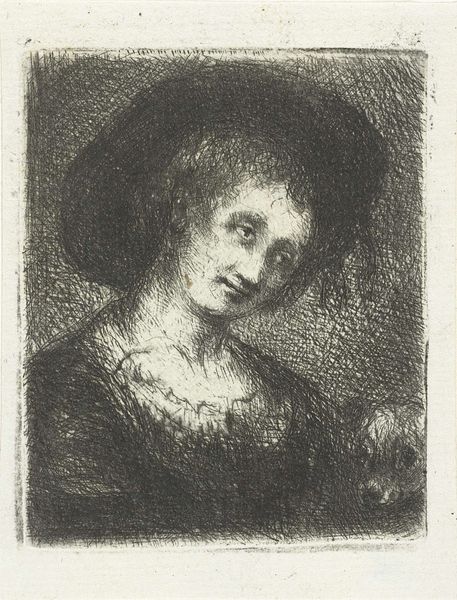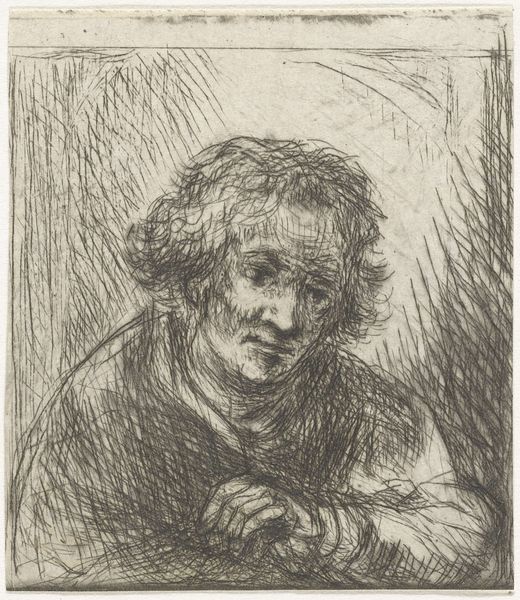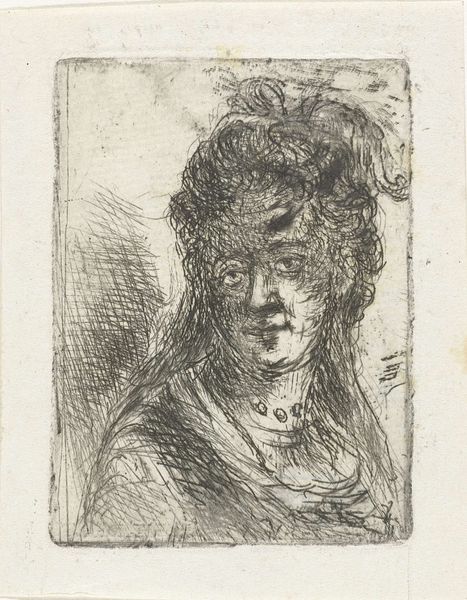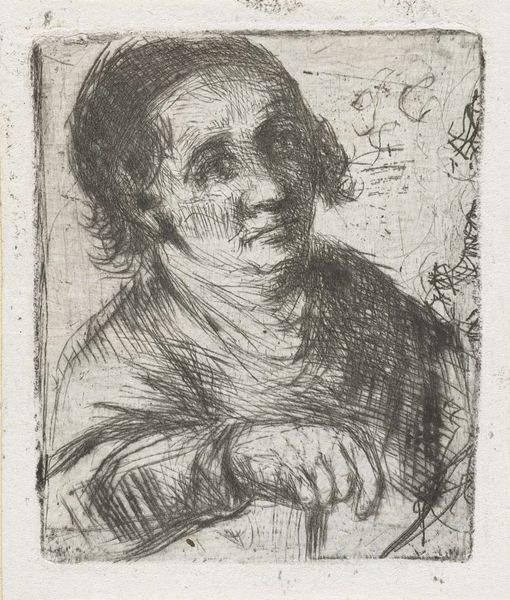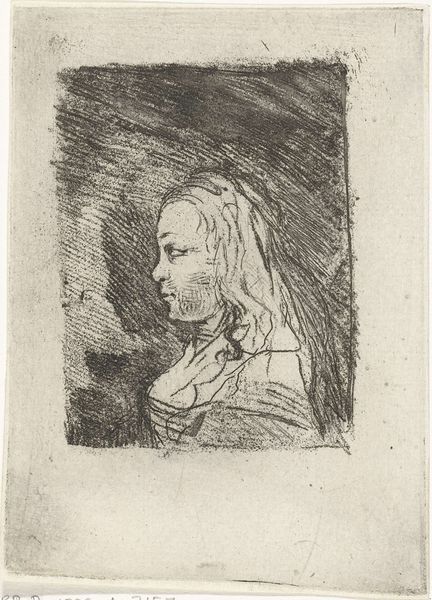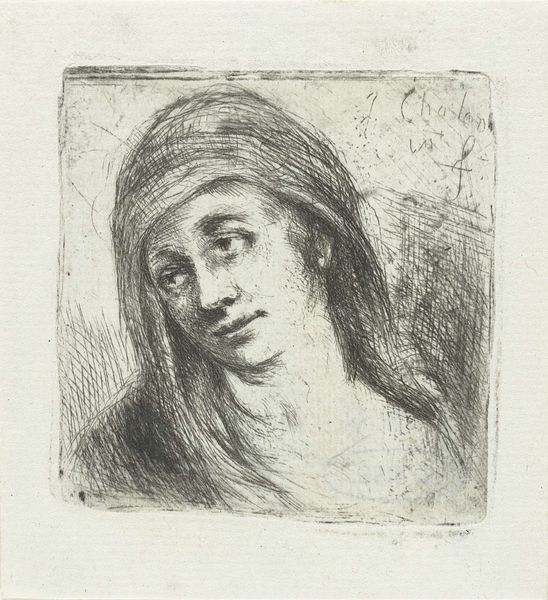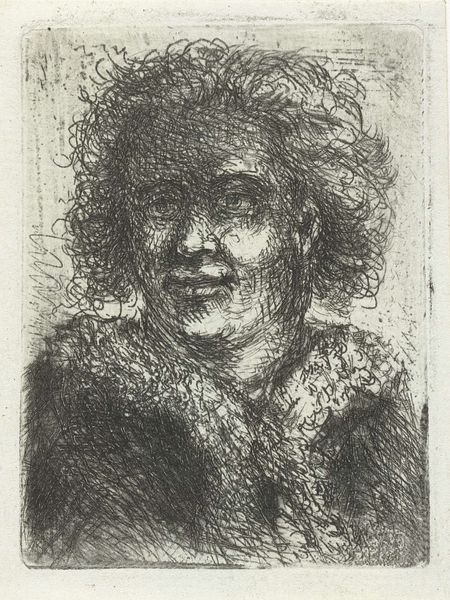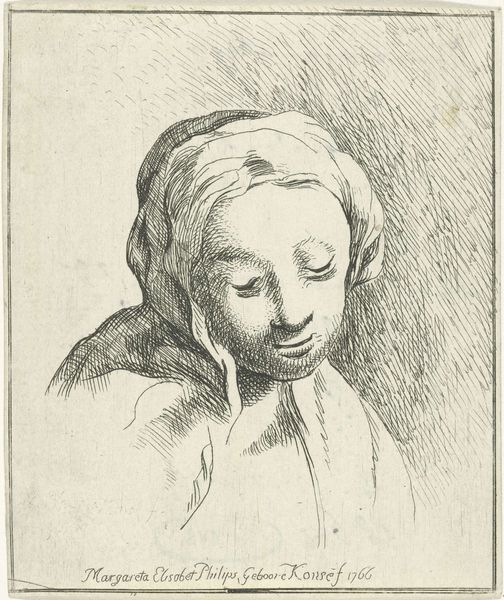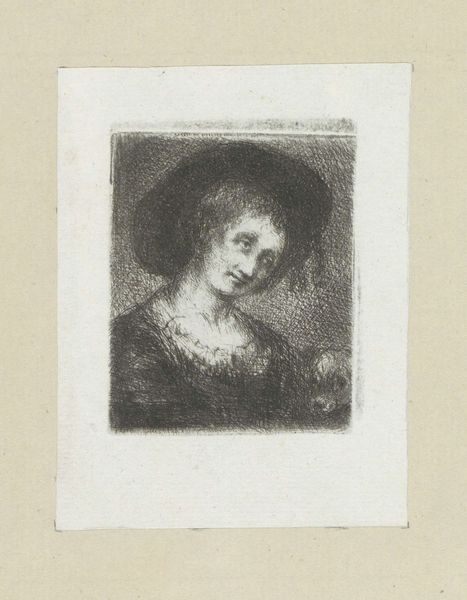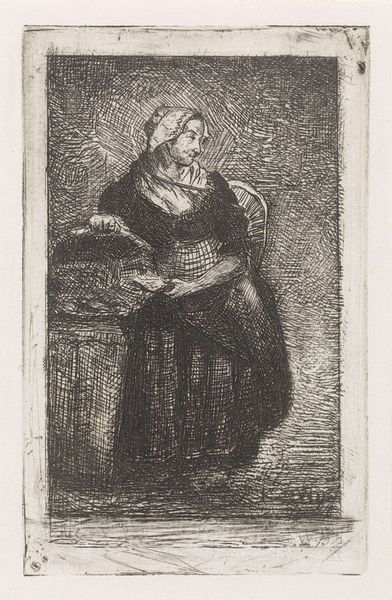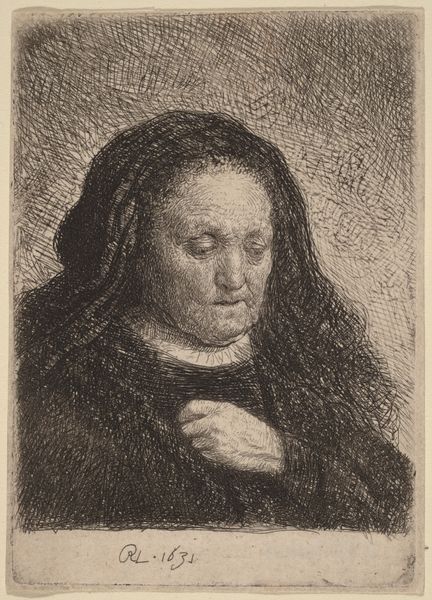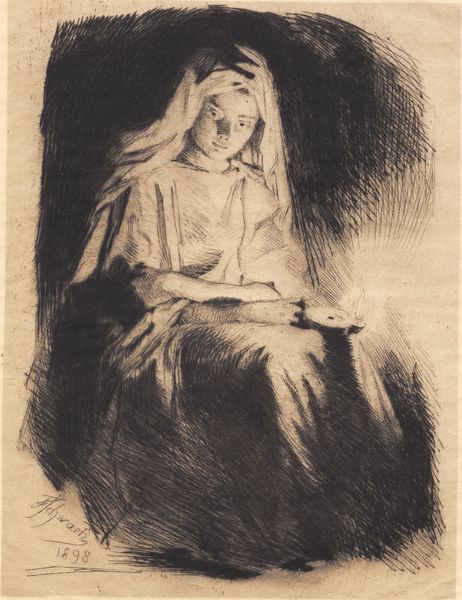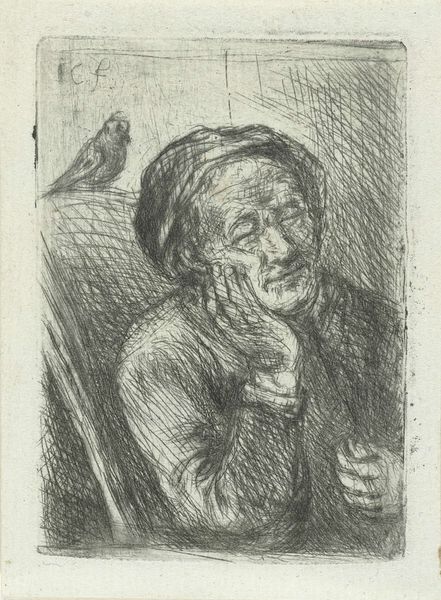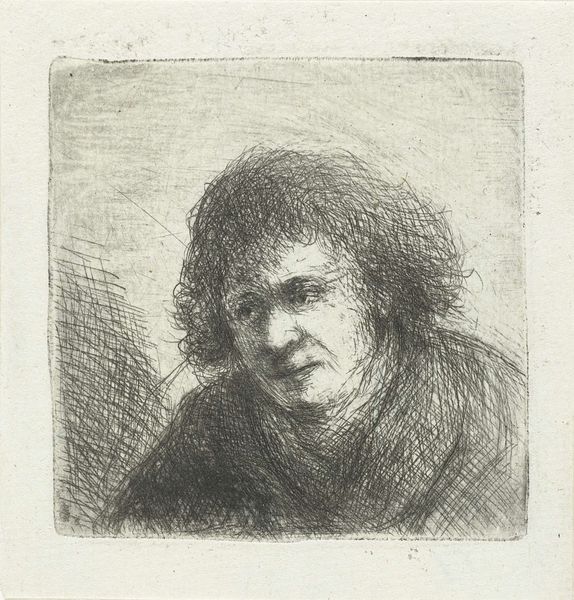
print, etching, engraving
#
portrait
# print
#
etching
#
genre-painting
#
engraving
#
realism
Dimensions: height 68 mm, width 55 mm
Copyright: Rijks Museum: Open Domain
Curator: This is "Woman Behind a Balustrade," a print by Jan Chalon, made sometime between 1748 and 1795. Editor: It has a very intimate feeling. The darkness pressing in behind the subject and the grainy textures of the medium evoke a certain emotional depth, almost melancholy. Curator: Notice how Chalon employs a network of etched lines to delineate the subject. The artist meticulously varies line weight and density, producing a range of tonal values that lend form and dimension to the figure. Editor: Indeed, but the woman herself – her gaze, averted slightly downward, that little smirk playing on her lips – invites more readings. Balustrades traditionally suggest status. Here it’s downplayed, almost like a stage prop. Could she represent a certain guardedness? Curator: Functionally, it also anchors the composition. The strong horizontal of the balustrade gives stability to what might otherwise become a swirling mass of lines, especially considering how loose the handling becomes above her head. This, for me, really defines the work. The interplay between control and apparent chaos. Editor: I see that structural opposition, definitely. For me, that play of light and dark resonates. She seems to exist in a transitional space, suspended between darkness and illumination. What is she contemplating? It’s ambiguous and loaded with symbolic potential. It’s not a straightforward portrait, that’s clear. Curator: But do note how, stylistically, Chalon clearly engages with contemporary artistic movements like realism. It allows him to create textures and capture moments with precision. Editor: Precisely that intersection is what I appreciate most—when technical rigor elevates the work and teases deeper human truths. Thank you, Jan Chalon. Curator: Indeed. Its enduring visuality makes the print stand out to me even after repeated viewings.
Comments
No comments
Be the first to comment and join the conversation on the ultimate creative platform.
